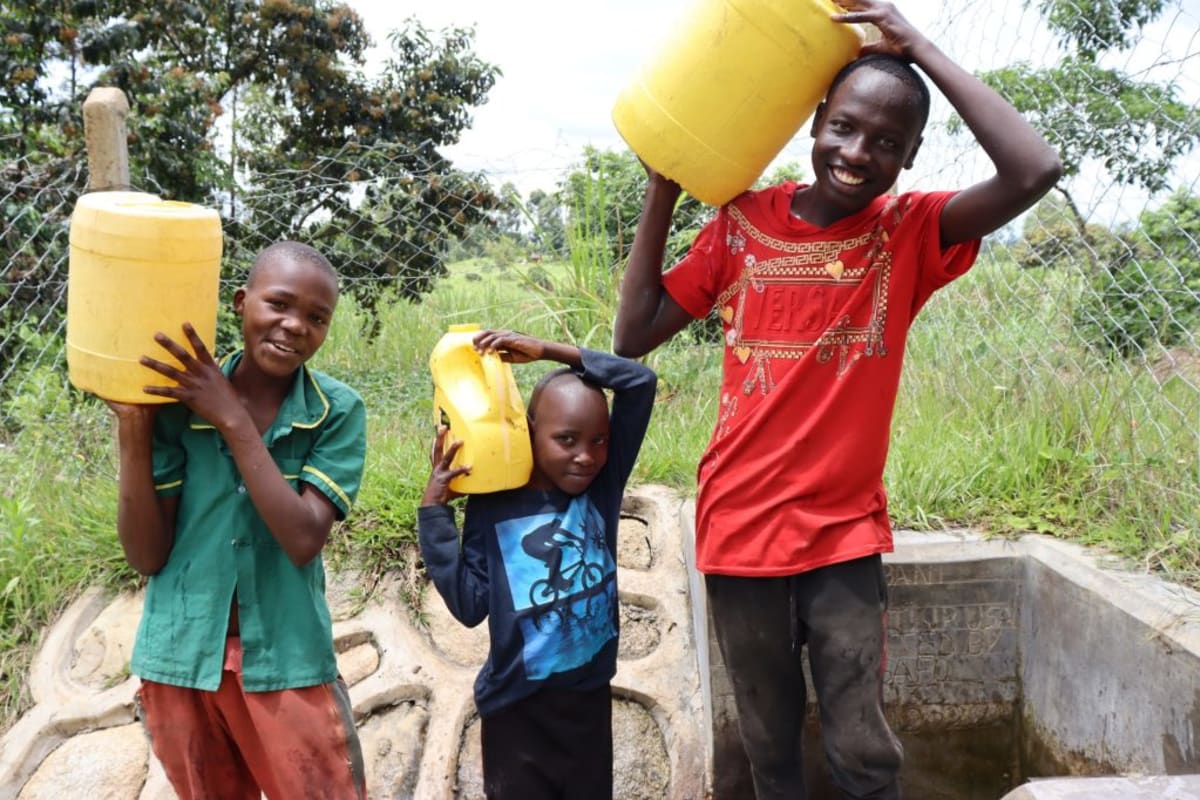Peter Ambani Spring serves as the primary water source for the 105 residents of Mawanyi community. Sadly, the spring is not only contaminated and overcrowded, but safe accessibility is challenging.
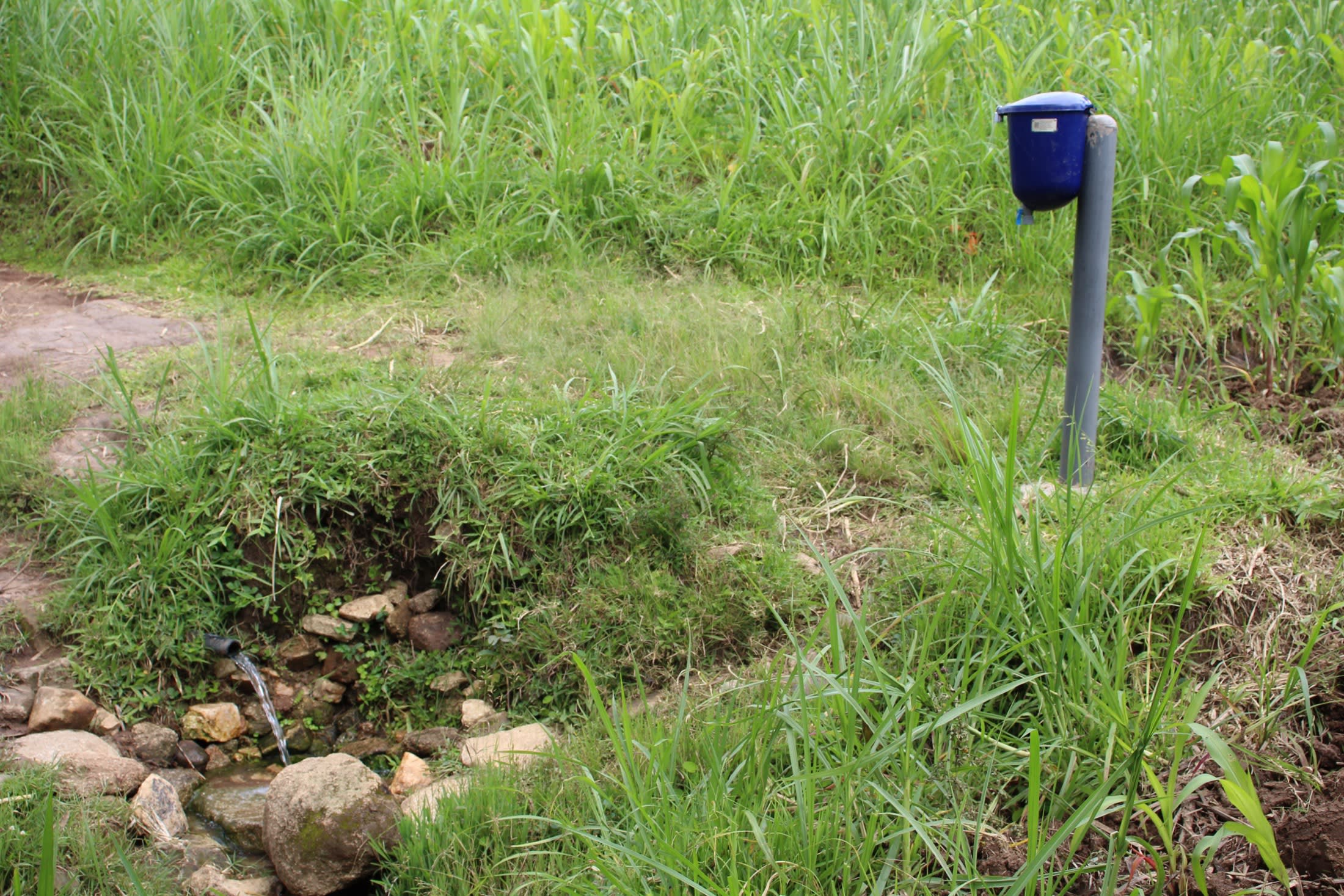
Daniel K., 10, shown in the photo below, shared, "As children, we are expected to be helping our parents with house chores at home on time and perfectly, but it has not been easy on my side as I go to fetch water. I use a lot of time at the water point. [In] the end, I will not be able to finish other chores on time and have time to play."
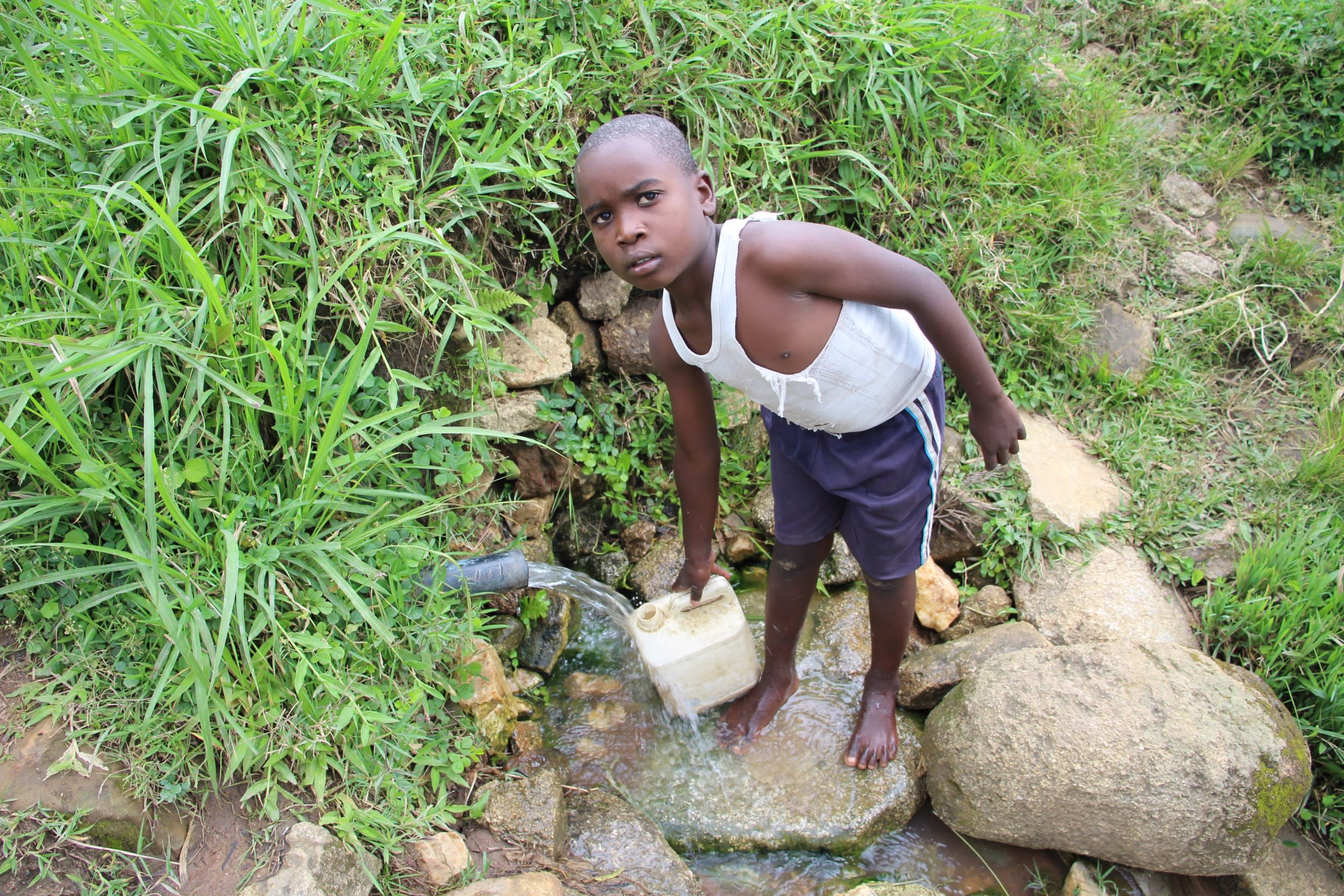
Community members typically fetch water early morning and evening to avoid congestion at the water point. However, they still waste time in lines queuing for water, consuming time meant for other domestic chores.
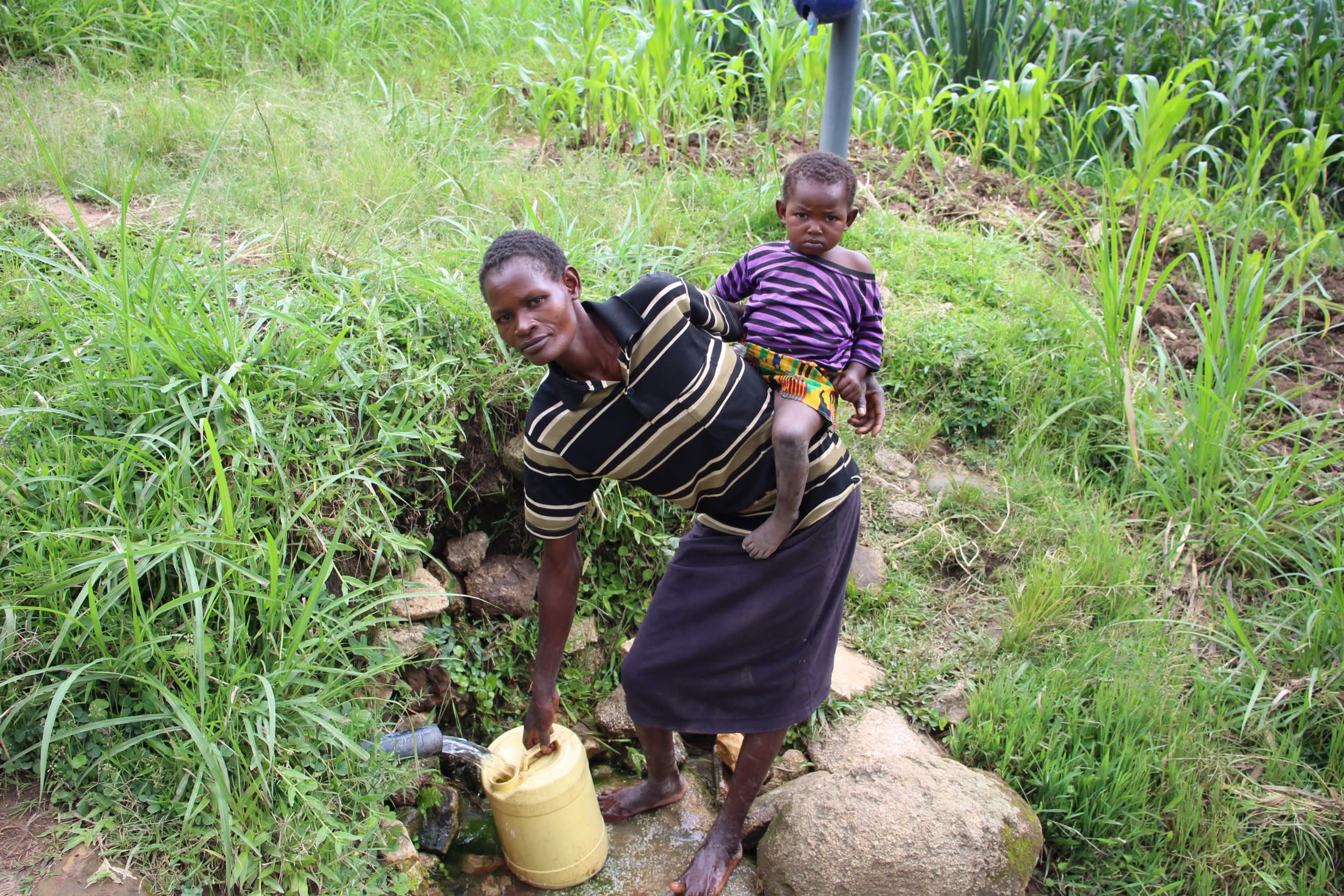
"[I] am [a] housewife, and a lot is expected from me by my family members while at home. Every time I go to fetch water, I use more time than expected, which causes problems in my family with my husband. [He] thinks I always create stories that there [is] a queue at the water point," said Rose Ambani, a 30-year-old housewife (shown above collecting water).
Another challenge for people attempting to collect water is the spring's location at the bottom of a muddy slope, which becomes especially slick during the rainy season. This leaves community members at risk of falling and being injured while hauling heavy containers of water.
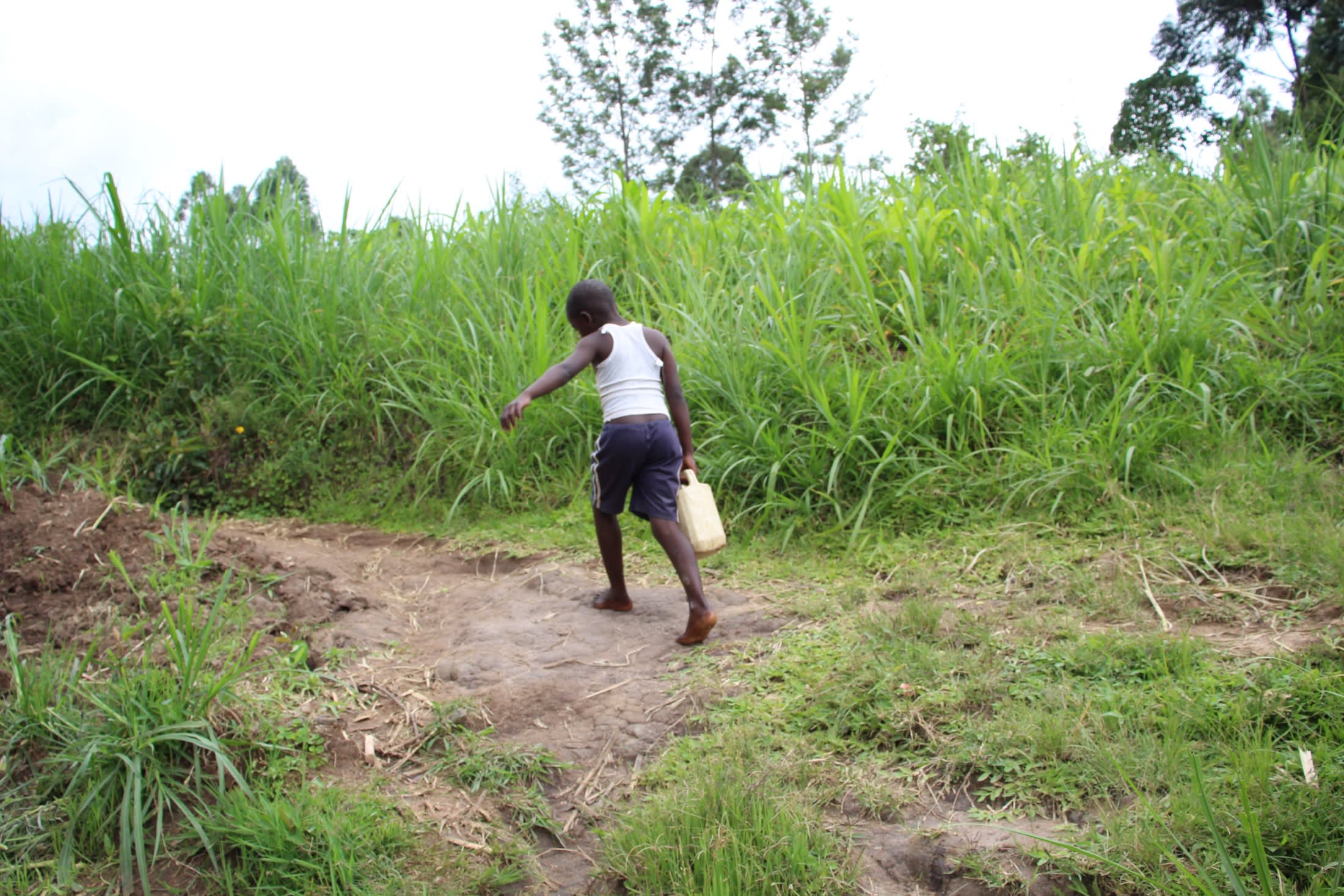
Once people have managed to safely navigate their way to the spring and wait their turn for water, the water they collect is still contaminated and unsafe for drinking due to both animal and human contamination as well as farming runoff.
Despite all of the challenges, the community has tried its best to improve the spring. Community members installed a pipe in an attempt to funnel the spring eye and make collecting water faster. Also, a chlorine dispenser (blue bucket in photos) was installed near the spring, which has helped reduce the number of water-related illnesses a bit, but not enough.
Hopefully, with proper spring protection, the time it takes for people to collect water safely will reduce, and cases of water-related illnesses will entirely diminish.
What We Can Do:
Spring Protection
Protecting the spring will help provide access to cleaner and safer water and reduce the time people have to spend to fetch it. Construction will keep surface runoff and other contaminants out of the water. With the community's high involvement in the process, there should be a good sense of responsibility and ownership for the new clean water source.
Fetching water is a task predominantly carried out by women and young girls. Protecting the spring and offering training and support will, therefore, help empower the female members of the community by freeing up more of their time and energy to engage and invest in income-generating activities and their education.
Training on Health, Hygiene and More
To hold trainings during the pandemic, we work closely with both community leaders and the local government to approve small groups to attend training. We ask community leaders to invite a select yet representative group of people to attend training who will then act as ambassadors to the rest of the community to share what they learn. We also communicate our expectations of physical distancing and wearing masks for all who choose to attend.
The training will focus on improved hygiene, health, and sanitation habits in this community. With the community's input, we will identify key leverage points where they can alter their practices at the personal, household, and community levels to affect change. This training will help to ensure participants have the knowledge they need about healthy practices and their importance to make the most of their water point as soon as water is flowing.
Our team of facilitators will use a variety of methods to train community members. Some of these methods include participatory hygiene and sanitation transformation, asset-based community development, group discussions, handouts, and demonstrations at the spring.
One of the most important issues we plan to cover is the handling, storage, and treatment of water. Having a clean water source will be extremely helpful, but it is useless if water gets contaminated by the time it is consumed. We and the community strongly believe that all of these components will work together to improve living standards here, which will help to unlock the potential for these community members to live better, healthier lives.
We will then conduct a small series of follow-up trainings before transitioning to our regularly scheduled support visits throughout the year.
Training will result in the formation of a water user committee, elected by their peers, that will oversee the operations and maintenance of the spring. The committee will enforce proper behavior around the spring and delegate tasks that will help preserve the site, such as building a fence and digging proper drainage channels. The fence will keep out destructive animals and unwanted waste, and the drainage will keep the area's mosquito population at a minimum.

 Protected Spring
Protected Spring
 Rehabilitation Project
Rehabilitation Project

































